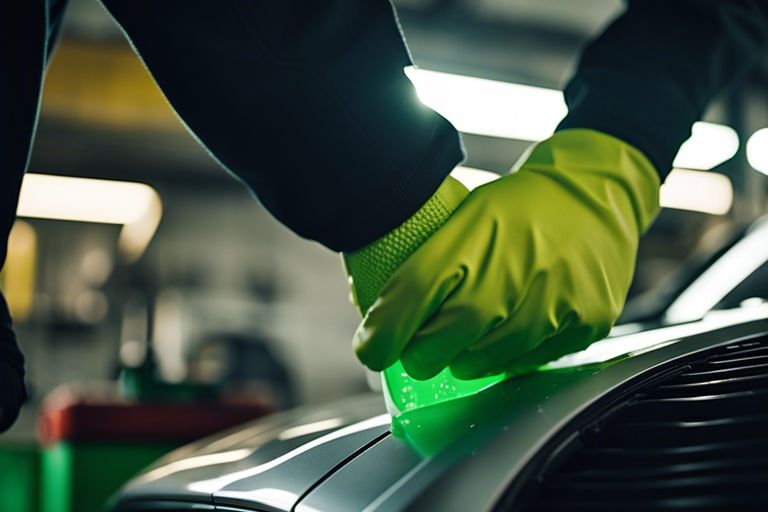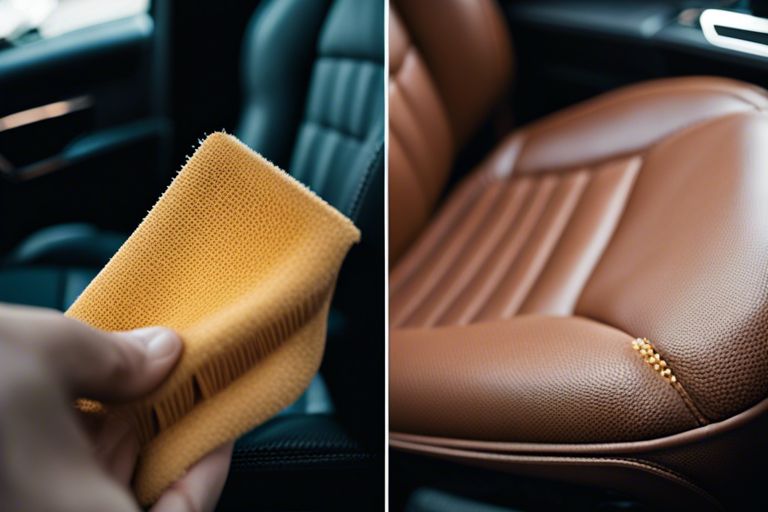Have you ever found yourself facing the daunting task of cleaning antifreeze off your engine? Whether it’s a small spill or a major leak, dealing with antifreeze can be a messy and potentially hazardous job. Antifreeze contains toxic compounds like ethylene glycol, which is harmful to both humans and animals. It’s important to take the proper precautions when cleaning up antifreeze to protect yourself and the environment. In this informative blog post, we will guide you through the step-by-step process of safely and effectively cleaning antifreeze off your engine. We’ll also cover the potential risks associated with antifreeze exposure and the best practices for preventing future spills. By the end of this post, you’ll have the knowledge and confidence to tackle this task.
Safety Precautions
Your safety should be the top priority when working with antifreeze and cleaning the engine. Here are some safety precautions you need to take to protect yourself and others from potential harm.
Personal Protective Equipment
When cleaning antifreeze off the engine, it is crucial to wear the appropriate personal protective equipment (PPE) to protect yourself from exposure to harmful chemicals. This includes wearing nitrile gloves, safety goggles, and a face mask to prevent inhalation and skin contact with the antifreeze. Additionally, wearing coveralls or a protective apron can prevent the antifreeze from coming into contact with your skin or clothing.
Preparing the Work Area
Before you start cleaning the engine, it is essential to prepare the work area to minimize the risk of accidents and exposure to antifreeze. Ensure that the work area is well-ventilated to prevent the buildup of fumes from the antifreeze. Also, make sure the engine is cool before working on it to avoid the risk of burns from hot surfaces. It is also important to have a spill kit and absorbent materials on hand to quickly contain and clean up any accidental spills or leaks of antifreeze.
By following these safety precautions, you can protect yourself from the harmful effects of antifreeze and ensure a safer cleaning process for your engine.

Identifying Antifreeze Contamination
Any time you suspect antifreeze contamination on your engine, it’s crucial to take immediate action to prevent damage. Identifying the presence of antifreeze on your engine is the first step in the cleaning process. For a comprehensive guide on how to clean antifreeze off your engine, you can visit How To Clean Coolant Off The Engine | Cleanestor.
Visual Inspection of the Engine
During your regular engine maintenance, it’s essential to visually inspect your engine for any signs of antifreeze contamination. Look for puddles or drips of bright green or orange liquid under your car, which are clear indicators of a leak. Additionally, check for stains or discoloration on the engine components, which can suggest antifreeze has been leaked and evaporated, leaving behind residue.
Signs of Antifreeze Leaks
Another evident sign of antifreeze contamination is the presence of a sweet, maple syrup-like odor coming from the engine bay. This scent is distinct and can help you identify a leak even before you see any visible signs. Keep an eye out for any steam coming from the engine, which can be a result of antifreeze leaking onto hot components.
Step-by-Step Cleaning Guide
After Cleaning Dried Coolant off your Engine, you are ready to start the process of cleaning antifreeze off your engine. Let’s go through the step-by-step cleaning guide to help you get the job done effectively and safely.
Degreasing the Engine
When it comes to cleaning antifreeze off your engine, the first step is degreasing. This involves using a quality engine degreaser to break down and remove the antifreeze residue from the surfaces of the engine. You can use a soft brush to scrub the degreaser onto the affected areas, ensuring that you cover all the contaminated areas thoroughly. Allow the degreaser to sit for a few minutes to penetrate and loosen the antifreeze residue before rinsing it off.
Rinsing and Neutralizing
Once you have finished degreasing the engine, it’s important to thoroughly rinse off the degreaser and any remaining antifreeze residue. Use a hose with a nozzle attachment to spray clean water over the engine, ensuring that you remove all traces of the degreaser and antifreeze. After rinsing, it’s crucial to neutralize any remaining antifreeze residue by using a mixture of water and baking soda. This will help to neutralize the acidity of the antifreeze and prevent corrosion on the engine surfaces.

Prevention and Maintenance
Now that you’ve learned how to clean antifreeze off your engine, it’s essential to know how you can prevent future spills and maintain your engine’s cleanliness. To prevent the need for future cleaning, it’s crucial to take proper precautions and conduct regular maintenance on your vehicle’s cooling system. For additional tips on cleaning spilled coolant from the engine bay, you can also check out this resource here.
Regular Inspection for Leaks
Regularly inspecting your vehicle for leaks is important for maintaining a clean engine bay. Look for any signs of leaks and address them immediately. Inspect the hoses, clamps, water pump, and radiator for any signs of wear or damage. This proactive approach will help you catch any potential leaks early, preventing a messy and potentially hazardous situation.
Tips for Avoiding Future Spills
When it comes to avoiding future spills, there are a few key tips to keep in mind. First, make sure to handle your antifreeze with care and always dispose of it properly. Ensure that all connections and hoses in your cooling system are secure and in good condition. When refilling your coolant, use a funnel to avoid spills and clean up any spills immediately to prevent them from seeping into the engine bay. Assume that prevention is the best approach to avoiding future cleaning tasks.
Conclusion
With these considerations in mind, you now have the knowledge and tools to effectively clean antifreeze off your engine. By using a degreaser, a soft brush, and water, you can remove the antifreeze residue without damaging your engine. It’s important to ensure that the engine is cooled down before beginning the cleaning process and to take proper safety precautions. Regular maintenance of your engine will not only keep it in good working order but also extend its lifespan. By following these steps, you can safely and effectively clean antifreeze off your engine, keeping it running smoothly for years to come.
FAQ
Q: How do I clean antifreeze off my engine?
A: To clean antifreeze off your engine, start by allowing the engine to cool down completely. Then, use a degreaser specifically designed for engines and apply it to the affected area. Use a brush to scrub the area gently, and then rinse thoroughly with water. Repeat as necessary until the antifreeze is completely removed.
Q: Can I use soap and water to clean antifreeze off my engine?
A: Soap and water may work for light spills, but for larger spills or stubborn stains, it is best to use a degreaser designed for engines. This is because antifreeze can be corrosive and simply washing it with soap and water may not fully remove it.
Q: Is it safe to use a pressure washer to clean antifreeze off my engine?
A: Using a pressure washer can be effective in removing antifreeze from the engine, but it is important to use it with caution. Ensure that you are using the appropriate pressure and distance to avoid damaging sensitive engine components.
Q: Will antifreeze damage my engine if not cleaned properly?
A: Antifreeze can be corrosive and if left on the engine for an extended period of time, it can potentially cause damage. It is important to clean any spills or leaks promptly to prevent potential damage to the engine.
Q: Are there any special precautions I should take when cleaning antifreeze off my engine?
A: When cleaning antifreeze off the engine, it is important to wear gloves and eye protection to avoid any potential skin or eye irritation. Additionally, ensure that the engine is cool before starting the cleaning process to prevent any potential burns.
- How to Close Spark Plug Gap: Expert Tips and Tricks! - May 13, 2024
- How to Perfectly Align Projector Headlights With Halo - May 13, 2024
- How Many Amps Does a Car Horn Draw? Unveiling the Power Requirements - May 13, 2024


